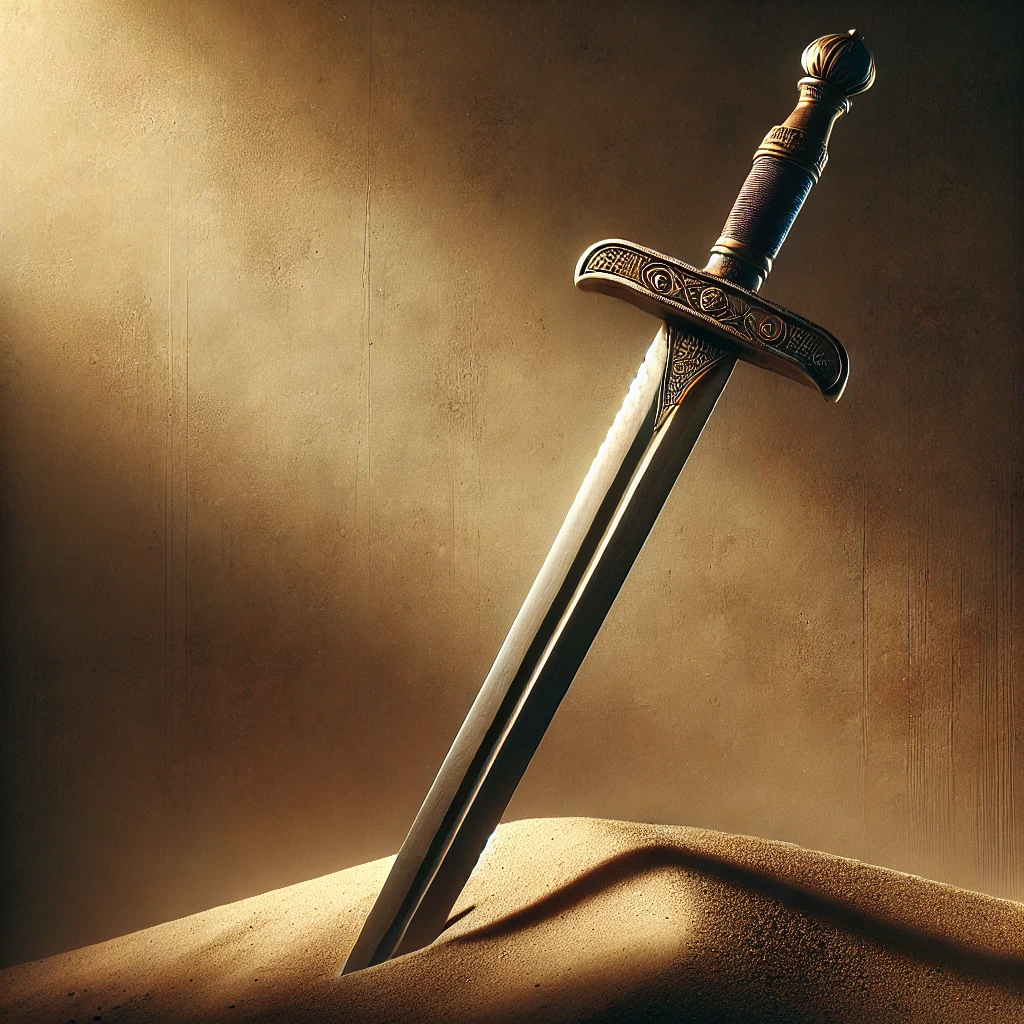The year was 1521. As the warm tropical breeze swept across the shores of Mactan Island, two worlds stood on the brink of a collision that would echo through the annals of history. On one side, the indigenous people of the Philippines, led by the indomitable Datu Lapu-Lapu, stood ready to defend their homeland. On the other, the Spanish expedition led by Ferdinand Magellan, buoyed by their technological superiority and hunger for conquest, prepared to assert their dominance. Little did they know that this encounter would become a defining moment in Philippine history, a testament to the power of indigenous resistance against colonial ambition.
The Battle of Mactan, which unfolded on April 27, 1521, was more than just a military engagement. It was a clash of cultures, a confrontation between two vastly different worldviews, and a pivotal moment that would shape the course of Philippine history for centuries to come. As we delve into the events of that fateful day, we must remember that we are not merely recounting a battle, but exploring the roots of Filipino identity and the enduring spirit of a nation.
The Players: Lapu-Lapu and Magellan
Lapu-Lapu: The Defender of Mactan
Datu Lapu-Lapu, the central figure in this epic tale, was not merely a local chieftain but a symbol of indigenous leadership and resistance. Born and raised on the island of Mactan, Lapu-Lapu was steeped in the traditions and values of his people. His life was intertwined with the rhythms of the sea and the land, his authority derived from his wisdom, courage, and ability to protect and provide for his community.
Lapu-Lapu’s leadership was rooted in a deep understanding of his people’s way of life. He was not just a warrior but a custodian of his culture, a guardian of the delicate balance between his people and their environment. This holistic approach to leadership would prove crucial in the face of foreign invasion, as Lapu-Lapu’s intimate knowledge of the terrain and his people’s fighting techniques would become powerful weapons in the battle to come.
Ferdinand Magellan: The Explorer with Conquest in His Eyes
In stark contrast to Lapu-Lapu stood Ferdinand Magellan, a Portuguese explorer in the service of the Spanish crown. Magellan had already circumnavigated half the globe, driven by a relentless quest for glory, riches, and the expansion of Spanish influence. His arrival in the Philippines marked the culmination of a journey fraught with hardship, mutiny, and the constant specter of failure.
Magellan’s worldview was shaped by the European Age of Exploration, a time when the “discovery” of new lands was seen as a divine right and a path to fame and fortune. Armed with superior weaponry and a sense of cultural superiority, Magellan approached the shores of Mactan with the confidence of a conqueror, little suspecting the fierce resistance that awaited him.
The Context: A World in Flux
To truly understand the significance of the Battle of Mactan, we must consider the broader context of the early 16th century. This was a time of unprecedented global change, as European powers sought to expand their influence across the world’s oceans. The Philippines, with its strategic location and abundant resources, was a prize waiting to be claimed.
The Pre-Colonial Philippines: A Tapestry of Cultures
Before the arrival of the Spanish, the Philippines was not a unified nation but a diverse archipelago of independent barangays and chiefdoms. These societies were interconnected through complex networks of trade, diplomacy, and sometimes conflict. The cultural landscape was rich and varied, with each region developing its own unique traditions, languages, and social structures.
Mactan Island, where Lapu-Lapu ruled, was part of this vibrant tapestry. Its people were skilled seafarers, traders, and warriors, their lives intimately connected to the rhythms of the ocean. Their society was built on a foundation of communal values, ancestral traditions, and a deep respect for the natural world – a stark contrast to the individualistic and expansionist mindset of the European explorers.
The Spanish Expedition: Ambition and Divine Mandate
Magellan’s expedition was driven by a potent mix of economic, political, and religious motivations. The Spanish crown sought to establish a western route to the Spice Islands, challenging Portuguese dominance in the lucrative spice trade. Moreover, the expedition carried with it the weight of the Catholic Church’s mission to spread Christianity to the “pagan” lands of the East.
This combination of commercial interest and religious zeal created a dangerous cocktail of ambition and self-righteousness. In the eyes of Magellan and his men, the indigenous people they encountered were not equals to be respected, but souls to be saved and subjects to be ruled.
The Prelude to Battle: Tensions Rise
The seeds of conflict were sown in the days leading up to the Battle of Mactan. Magellan’s fleet had arrived in the central Philippines, making contact with local rulers and attempting to assert Spanish authority through a mix of diplomacy and intimidation. On the nearby island of Cebu, Magellan had managed to establish an alliance with Rajah Humabon, the local chieftain, even convincing him and many of his subjects to convert to Christianity.
However, Lapu-Lapu remained steadfast in his refusal to submit to Spanish authority. He saw through Magellan’s gestures of friendship, recognizing them as thinly veiled attempts at subjugation. Lapu-Lapu’s defiance was not merely an act of personal pride but a defense of his people’s sovereignty and way of life.
The Ultimatum: A Fateful Decision
As tensions escalated, Magellan issued an ultimatum to Lapu-Lapu: submit to Spanish authority or face the consequences. This ultimatum was more than a threat; it was a fundamental misunderstanding of the indigenous power structures and values that Lapu-Lapu represented. For Lapu-Lapu and his people, submission to a foreign power was unthinkable, a betrayal of their ancestors and their way of life.
Lapu-Lapu’s response to this ultimatum was unequivocal. He would not bow to foreign demands, no matter the cost. This decision set the stage for the inevitable confrontation, a battle that would pit the technological superiority of the Spanish against the home-ground advantage and fierce determination of the Mactan warriors.
The Battle Unfolds: David Versus Goliath
In the pre-dawn hours of April 27, 1521, Magellan and his men prepared for what they believed would be a swift and decisive victory. They grossly underestimated both the resolve of their opponents and the challenges posed by the local terrain. Let us examine the battle in detail, breaking it down into key phases that highlight the strategic brilliance of Lapu-Lapu and the fatal errors of Magellan.
Phase 1: The Landing
| Time | Spanish Actions | Mactan Response |
|---|---|---|
| Early morning | Magellan leads 60 men towards Mactan shore | Lapu-Lapu positions warriors along the beach and in concealed positions |
| Dawn | Spanish boats struggle with coral reefs, forcing men to wade ashore | Mactan warriors unleash a barrage of arrows and spears |
| Mid-morning | Spanish formation breaks as they scramble to reach dry land | Lapu-Lapu’s forces maintain disciplined defense, inflicting casualties |
The battle began with Magellan’s fateful decision to personally lead the attack on Mactan. With 60 men, he set out in the early morning hours, confident in the superiority of Spanish arms and armor. However, the approach to Mactan’s shore proved treacherous. Coral reefs and sandbars forced the Spanish to abandon their boats far from the beach, leaving them to wade through chest-deep water under a hail of arrows and spears from Lapu-Lapu’s warriors.
This initial phase of the battle immediately nullified many of the Spanish advantages. Their firearms, while powerful, were rendered largely ineffective in the water. The heavy armor that protected them on land now weighed them down, making them easy targets for the nimble Mactan defenders. Lapu-Lapu had effectively turned the environment itself into a weapon, using his intimate knowledge of the local terrain to devastating effect.
Phase 2: The Spanish Assault
| Time | Spanish Actions | Mactan Response |
|---|---|---|
| Late morning | Spanish forces regroup on the beach, attempt to form battle lines | Lapu-Lapu’s warriors continue harassing attacks, avoiding direct engagement |
| Midday | Magellan orders houses near the shore to be burned as a diversion | Mactan forces use smoke as cover for flanking maneuvers |
| Early afternoon | Spanish push inland, seeking decisive engagement | Lapu-Lapu employs hit-and-run tactics, wearing down the invaders |
As the Spanish finally gained the beach, they sought to regroup and leverage their superior weaponry and tactics. Magellan, recognizing the need to draw out the Mactan warriors, ordered the burning of houses near the shore. This decision, intended to provoke a direct confrontation, instead played into Lapu-Lapu’s hands. The smoke provided cover for the Mactan warriors to execute flanking maneuvers, further disorienting the already beleaguered Spanish forces.
Lapu-Lapu’s strategy was one of patience and attrition. Rather than meeting the Spanish in open combat, where their superior arms might have prevailed, he employed hit-and-run tactics. Warriors would emerge from the undergrowth to launch volleys of arrows and spears before melting back into the landscape. This approach frustrated the Spanish, who were accustomed to more direct engagements, and slowly sapped their strength and morale.
Phase 3: The Turning Point
| Time | Spanish Actions | Mactan Response |
|---|---|---|
| Mid-afternoon | Magellan leads a small group to cover retreating forces | Lapu-Lapu seizes the opportunity, focusing attack on Magellan |
| Late afternoon | Spanish retreat turns chaotic as Magellan falls | Mactan warriors press their advantage, pursuing fleeing Spanish |
| Evening | Surviving Spanish forces barely escape to their ships | Lapu-Lapu secures victory, Mactan celebrates |
The decisive moment of the battle came as the tide of conflict turned against the Spanish. Magellan, realizing the precariousness of their position, attempted to organize a fighting retreat. It was in this moment of crisis that Lapu-Lapu revealed the full measure of his tactical genius. Recognizing Magellan as the linchpin of the Spanish force, Lapu-Lapu directed a concentrated attack on the explorer and his immediate guard.
The ensuing melee was fierce but brief. Overwhelmed by the ferocity of the Mactan warriors and hampered by the very armor that was meant to protect him, Magellan fell. His death marked the collapse of Spanish morale and organization. What began as a retreat quickly devolved into a rout, with the surviving Spanish forces fleeing desperately for their boats.
The Aftermath: A Legacy Forged in Victory
The Battle of Mactan lasted only a few hours, but its repercussions would echo through centuries. Lapu-Lapu’s victory was more than a military triumph; it was a powerful statement of indigenous resistance against colonial aggression. The immediate aftermath saw the Spanish expedition in disarray, forced to continue their journey without their leader and with their aura of invincibility shattered.
Immediate Consequences
For the people of Mactan and the surrounding islands, the victory over the Spanish was a cause for celebration and a source of immense pride. Lapu-Lapu’s status as a leader was cemented, his name destined to become synonymous with courage and resistance in Philippine history. The battle also had significant implications for the Spanish colonial project in the Philippines. While it did not permanently halt Spanish ambitions in the region, it did delay further expeditions and forced a reassessment of Spanish tactics in dealing with indigenous populations.
Long-Term Impact
The legacy of the Battle of Mactan extends far beyond its immediate aftermath. It became a foundational story in the narrative of Philippine nationhood, a symbol of the Filipino spirit of independence and resistance against foreign domination. Lapu-Lapu, once a local chieftain, was transformed into a national hero, his image gracing everything from statues and stamps to the official seal of the Philippine National Police.
More profoundly, the battle serves as a powerful reminder of the strength and resilience of indigenous cultures in the face of colonial expansion. It challenges the notion of European technological and military superiority, demonstrating how local knowledge, tactical ingenuity, and unwavering determination could overcome seemingly insurmountable odds.
Reflections: The Battle of Mactan in Modern Context
As we look back on the Battle of Mactan from our vantage point in the 21st century, its relevance continues to resonate. The conflict between Lapu-Lapu and Magellan was more than a clash of arms; it was a collision of worldviews that continues to shape our understanding of history, culture, and identity.
Reexamining Historical Narratives
The story of the Battle of Mactan challenges us to reexamine traditional historical narratives that often prioritize European perspectives. By centering the experience and agency of indigenous peoples like Lapu-Lapu and his warriors, we gain a more nuanced and complete understanding of historical events. This shift in perspective is crucial not only for historical accuracy but for fostering a sense of pride and connection to heritage among modern Filipinos.
Lessons in Leadership and Resistance
Lapu-Lapu’s leadership during the Battle of Mactan offers timeless lessons in the power of strategic thinking, cultural knowledge, and unwavering commitment to one’s principles. In an era where global powers continue to exert influence over smaller nations, the story of Mactan reminds us that resistance is possible and that local knowledge and determination can be powerful tools against external pressures.
The Continuing Relevance of Indigenous Knowledge
Perhaps one of the most important lessons from the Battle of Mactan is the value of indigenous knowledge and practices. Lapu-Lapu’s victory was not just a triumph of arms but a vindication of a way of life intimately connected to the local environment. In our current age of global environmental challenges, the wisdom embedded in indigenous cultures offers valuable insights for sustainable living and harmonious coexistence with nature.
A Battle That Shaped a Nation
The Battle of Mactan, though brief in duration, left an indelible mark on the course of Philippine history. It stands as a testament to the power of indigenous resistance, the strength of local knowledge, and the enduring spirit of a people determined to maintain their way of life in the face of foreign aggression. Lapu-Lapu’s victory over Magellan was not just a military achievement but a pivotal moment that would shape the Filipino national identity for generations to come.
As we reflect on this historic encounter, we are reminded that history is not a simple narrative of victors and vanquished. It is a complex tapestry of human experiences, cultural interactions, and pivotal moments that continue to shape our world. The Battle of Mactan, with its David-versus-Goliath narrative, continues to inspire and provoke thought, challenging us to consider the true meaning of heroism, leadership, and national identity.
In the end, the legacy of Lapu-Lapu and the Battle of Mactan is not just a story of past glory but a living inspiration for present and future generations. It reminds us that in every battle, there is a legacy, and in every hero, we find the heart of a nation. As we face the challenges of our own time, may we draw strength and wisdom from this epic tale of courage, strategy, and the indomitable spirit of a people defending their homeland.
Disclaimer: This article is based on historical records and academic research available as of April 2024. While every effort has been made to ensure accuracy, our understanding of historical events is continually evolving. Readers are encouraged to engage in further research and to consider multiple perspectives when studying historical events. If you notice any inaccuracies or have additional information to contribute, please contact us so we can update and improve this article.




